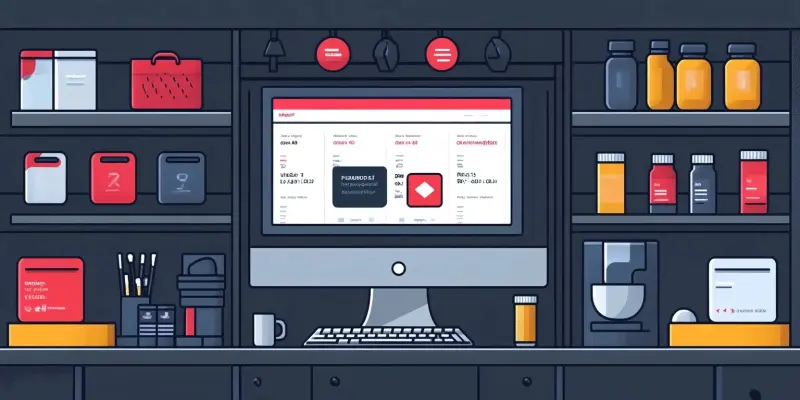Personalized advertising is becoming a cornerstone of effective digital marketing strategies. As third-party cookies phase out, brands must adapt by leveraging first-party data to create more relevant and engaging ads. By tailoring ads to individual consumers based on their preferences, behaviors, and interests, companies can enhance customer engagement and improve conversion rates.
Modern consumers demand personalized experiences. Over 70% of customers expect brands to deliver tailored interactions, which means ads should reflect their buying behaviors, preferences, and loyalty status. Personalized ads, such as showing related products based on a customer’s app activity, can significantly improve the shopping experience and meet these high expectations.
Tailored ads are more effective at capturing customer attention. By addressing specific problems or interests, brands see higher engagement rates, with more clicks and purchases. When brands align their advertising strategies with the insights garnered from first-party data, the content resonates more with the audience, leading to enhanced customer interaction and response rates.
Personalized ads help brands spend their ad budgets more efficiently. For instance, Happy Hippo achieved a 4.7x return on ad spend (ROAS) and a 72% lower customer acquisition cost (CAC) using Shopify Audiences. By targeting specific audience segments, brands can reduce wasted ad spend and see a higher return on their marketing investments.
Half of consumers report improved shopping experiences when brands offer personalized promotions. Loyalty programs that sync customer data across channels can offer specialized ads and easier point redemption, further enhancing the shopping experience. Consumers who feel that their preferences and behaviors are acknowledged are more likely to develop brand loyalty, resulting in repeated transactions and long-term customer relationships.
Personalized advertising extends into affiliate marketing, where influencers and brand ambassadors drive meaningful conversions. Integrating affiliate marketing into a unified commerce strategy allows brands to track the entire customer journey. Personalized referral links, discount codes, and landing pages make affiliate marketing more effective, driving higher engagement and conversions.
Personalized ads leverage user data to create targeted marketing campaigns that resonate more with individual preferences, thereby increasing the likelihood of engagement and conversions. These ads rely on sophisticated algorithms and data analytics to understand consumer behavior, allowing marketers to deliver relevant content at the right time. Research indicates that personalized advertising can lead to higher click-through rates and improved return on investment compared to generic ads.
Brands using personalized ad campaigns, like those with Shopify’s Shop Campaigns, have seen up to 24% growth in new customers and faster initial orders within 48 hours of launching their campaigns. Shop Campaigns help brands create and manage targeted ads directly from the Shopify platform, leveraging store data to serve highly relevant ads.
Creating lookalike audiences allows brands to leverage their first-party data to find customers who resemble their best existing clients. For instance, if a company knows that their loyal customers are young professionals interested in fitness and wellness, they can use lookalike targeting to reach others with similar attributes.
Offering customers unique deals and discounts tailored to different customer segments often through automation like dynamic coupon codes or targeted notifications makes customers feel valued and recognized. By using first-party data to understand what types of offers resonate best with specific customer groups, brands can deliver highly relevant promotions that incentivize action and loyalty.
Promotions using geographic data offer discounts for in-store visits or nearby pickups, integrating into broader omnichannel strategies for seamless customer experiences. Location-based offers can drive foot traffic to physical stores and provide convenience for customers who prefer shopping locally.
Ethical considerations and user privacy are paramount in the digital age, where vast amounts of personal data are collected and analyzed. Obtaining explicit permission before gathering or using personal data ensures customers are aware and agree to the data use. Transparency in advertising practices is paramount.
Robust security measures protect customer information, helping prevent breaches and reinforcing brand reputation. Data minimization principles ensure that brands gather only the data required for specific purposes, reducing the likelihood of data misuse or loss. Prioritizing data security and minimization reinforces a brand’s commitment to ethical practices, safeguarding customer trust.
Providing customers with easy ways to manage their data preferences and opt-out of personalized advertising if desired strengthens customer relationships. Understanding and respecting customers’ comfort levels with sharing personal details is crucial for maintaining trust and ethical advertising practices.
Rely on first-party data gathered from website interactions, mobile apps, emails, loyalty programs, and in-store sales. Methods include embedding short surveys and offering incentives for sign-ups. Collecting data directly from customers ensures accuracy, relevance, and compliance with privacy regulations.
Offering real benefits like personalized offers and smoother shopping experiences can encourage customers to share their information. Building a Customer Data Platform (CDP) unifies customer interactions across channels. A well-structured CDP consolidates all customer data into a single source, facilitating improved segmentation and personalized marketing efforts.
Pixels track customer events, helping measure marketing performance and retarget shoppers. Properly managed pixels through Shopify’s Pixel Manager ensure site performance and privacy compliance. Segmenting customers using Shopify’s segmentation tools turns raw data into actionable groups, automatically updating based on shopping behaviors to send more relevant marketing messages.
Shopify offers a suite of tools designed to help merchants create personalized advertising campaigns. These tools enable businesses to reach their target audience more effectively through various channels, including social media, email marketing, and search engine advertising.
Shopify Audiences is an ad optimization tool that helps refine retargeting and find high-intent shoppers, improving ad efficiency and performance. This tool leverages first-party data to identify potential customers who are most likely to engage with the brand, enabling more precise targeting and better allocation of advertising resources.
Personalized advertising is increasingly becoming a fundamental element in effective digital marketing strategies. As third-party cookies are being phased out, brands are required to adapt by leveraging first-party data to create more relevant and engaging advertisements. This transition not only respects customer privacy but also builds trust and drives a higher return on investment (ROI).

